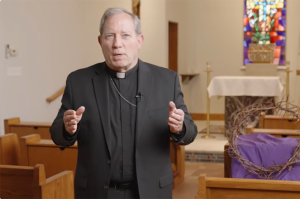When Is the Best Time to See the 'Supermoon' on Sunday?

Skywatchers are awaiting the appearance of a "Supermoon" on Sunday, when the moon will appear larger and brighter in the sky due to its proximity to the earth. But what's the best time to see it?
The moon will become totally full at 10:47 a.m. EST, according to Space.com, which also says It will officially reach perigee — it makes its closest approach to Earth — on Monday (Dec. 4) at 3:45 a.m. EST, when it is 222,135 miles away from Earth.
On average, the moon is about 238,900 miles away from Earth.
The December supermoon will be the first and last "supermoon" of 2017.
It will be the first of three full moon supermoons in succession. The two full moons in January 2018 – on January 2 and 31 – also count as supermoons, according to EarthSky.Org.
Supermoons happen when a full moon approximately coincides with the moon's perigee, or a point in its orbit at which it is closest to Earth, making the moon appear up to 14 percent larger and 30 percent brighter than usual.
Bill Ingalls, NASA's senior photographer, has some advice for those who want to make a photograph of the supermoon.
"Don't make the mistake of photographing the moon by itself with no reference to anything," he once said. "I've certainly done it myself, but everyone will get that shot. Instead, think of how to make the image creative — that means tying it into some land-based object. It can be a local landmark or anything to give your photo a sense of place."
Those using a smartphone camera, he said, "For me, it would be maddening and frustrating — yet it may be a good challenge, actually. You're not going to get a giant moon in your shot, but you can do something more panoramic, including some foreground that's interesting. Think about being in an urban area where it's a little bit brighter." He added, "Tap the screen and hold your finger on the object (in this case, the moon) to lock the focus. Then slide your finger up or down to darken or lighten the exposure."
Some believe the supermoon can destroy the Earth, might drive people crazy, cause natural disasters and wreak havoc on the tides, but that's not true, Space.com says.
NASA planetary geologist Noah Petro said earlier that while the tides might be slightly higher because of the moon's close approach, it won't make a noticeable difference for the average observer. The only thing that humans might experience this weekend is a good lunar show.
"There should be no impact on anybody on the Earth," Petro said.
"Studies have shown that a full moon of any kind does not affect human behaviors," the website says. "Full moons and supermoons do not cause more mental hospital admissions, psychiatric disturbances, homicide or other crime."
Scientists say supermoons will get smaller in the distant future because the moon is slowly propelling itself out of Earth's orbit, moving 3.8 centimeters farther from Earth each year. They suspect that at formation, the moon started out about 14,000 miles from the planet, but now, it's about about 238,900 miles away.




























